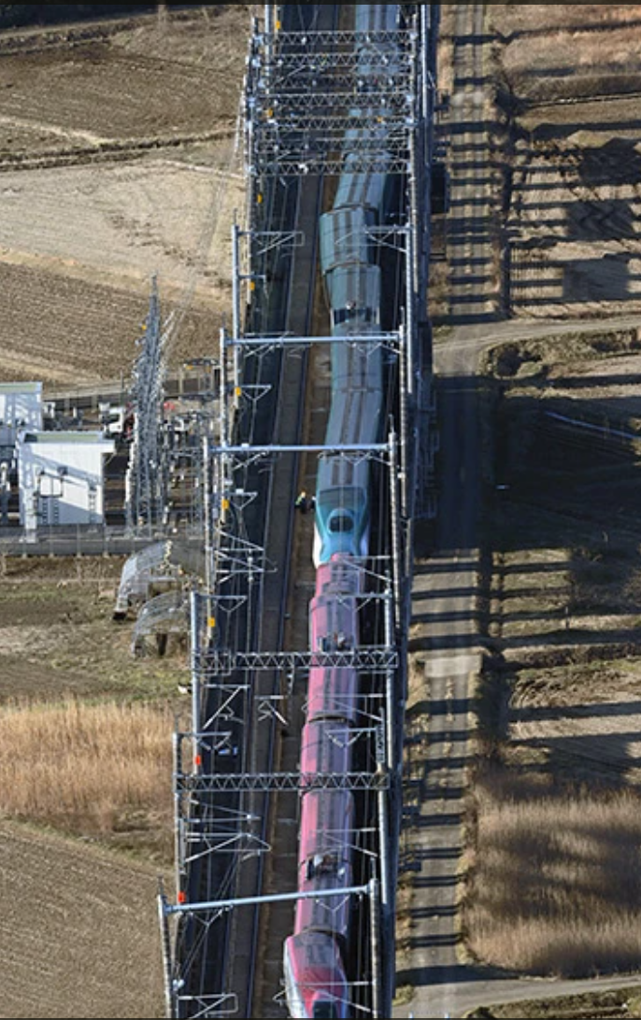Earthquake Early Warning - Blog
2022-08-16: Student's software evaluates accuracy of EEW system

Typically, when an earthquake occurs, it takes several minutes for a seismologist to analyze the data to determine the earthquake's size and location. The EEW system automatically performs this analysis within a few seconds. The details provided by the seismologist are more accurate, but those obtained by the EEW system should be similar.
Sarah Toshiko Moser, a co-operative student working for the Earthquake Early Warning (EEW) programme, has developed software to compare the location and magnitude obtained by the EEW system to those obtained by the seismologist. Sarah's software was recently used to examine the EEW system's simulated performance for earthquakes NRCan has recorded over the past few decades. This revealed the EEW system's locations and magnitudes were sufficiently close to those obtained by seismologists. This software will help monitor the system's performance when it is operational.
2022-08-03: EEW stations on Haida Gwaii
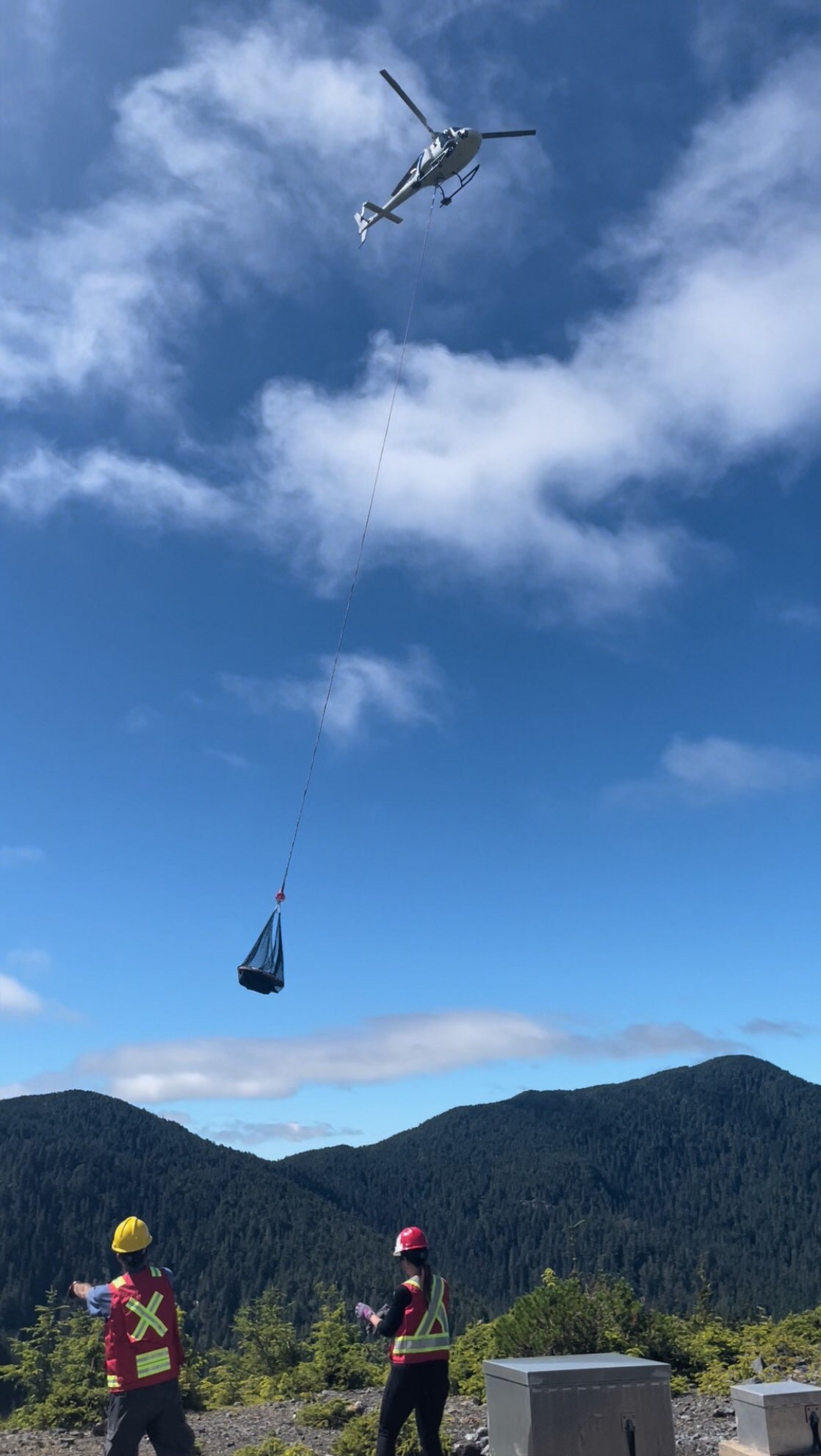
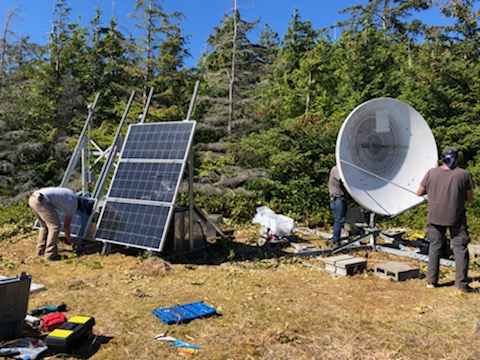
Last week, NRCan's field crew were grateful for blue skies and calm winds as they worked on Haida Gwaii. On Wednesday, a helicopter delivered an Earthquake Early Warning station kit on a sling (left hand photo) to a site in Gwaii Haanas Park. Lisa, Mingzhou, Scott, and James then installed the station's seismometer and other equipment (right hand photo). A satellite dish will send data to NRCan datacentres, and solar panels will provide the power to run the station. NRCan is working with the Council of the Haida Nation to ensure that the sites being used for these stations are in suitable locations.
2022-06-23: Anniversary of the Val-des-Bois earthquake in 2010
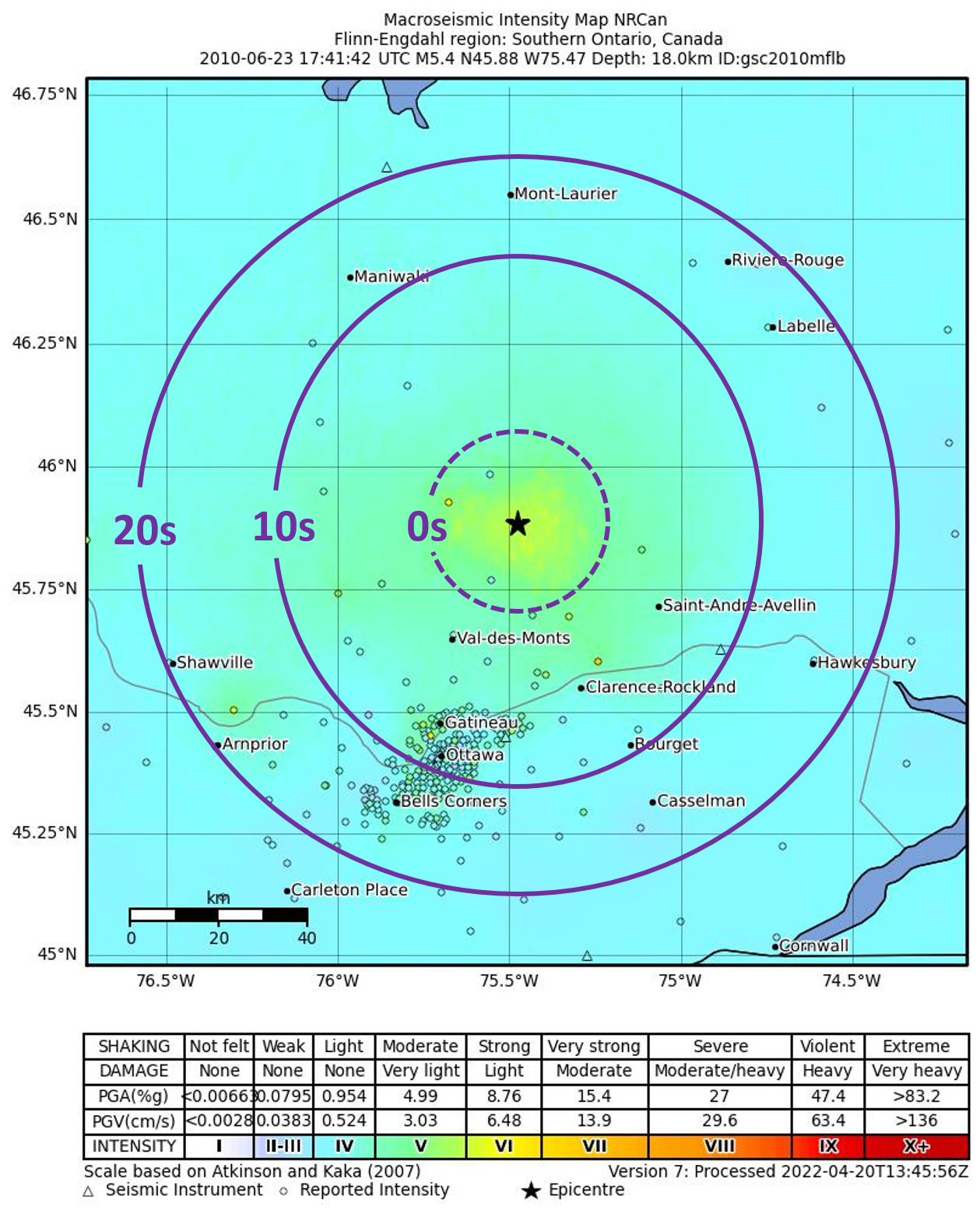
On this day in 2010, a magnitude 5 earthquake struck north of Ottawa, near the towns of Val-des-Bois and Gracefield in Quebec. The earthquake was felt to considerable distances: east of Quebec City, QC, west of London, ON, north of Sudbury, ON, and south into the northwestern United States, as far as Kentucky. This earthquake caused damage including a collapsed bridge, bricks fallen from several chimneys, cracked and uneven roads, and two landslides. There were also numerous reports of items falling off shelves. Thankfully, no serious injuries were reported.
When the EEW system is operational, people in Ottawa and Gatineau will receive 3-10 seconds of warning before the strong shaking arrives from a similar earthquake, with the amount of time dependent on where they were in the cities. This is enough time for automated systems to open doors, close valves, and sound alarms, and for people to take protective actions, usually to Drop, Cover and Hold on.
2022-06-20: Equipment for Remote EEW Stations
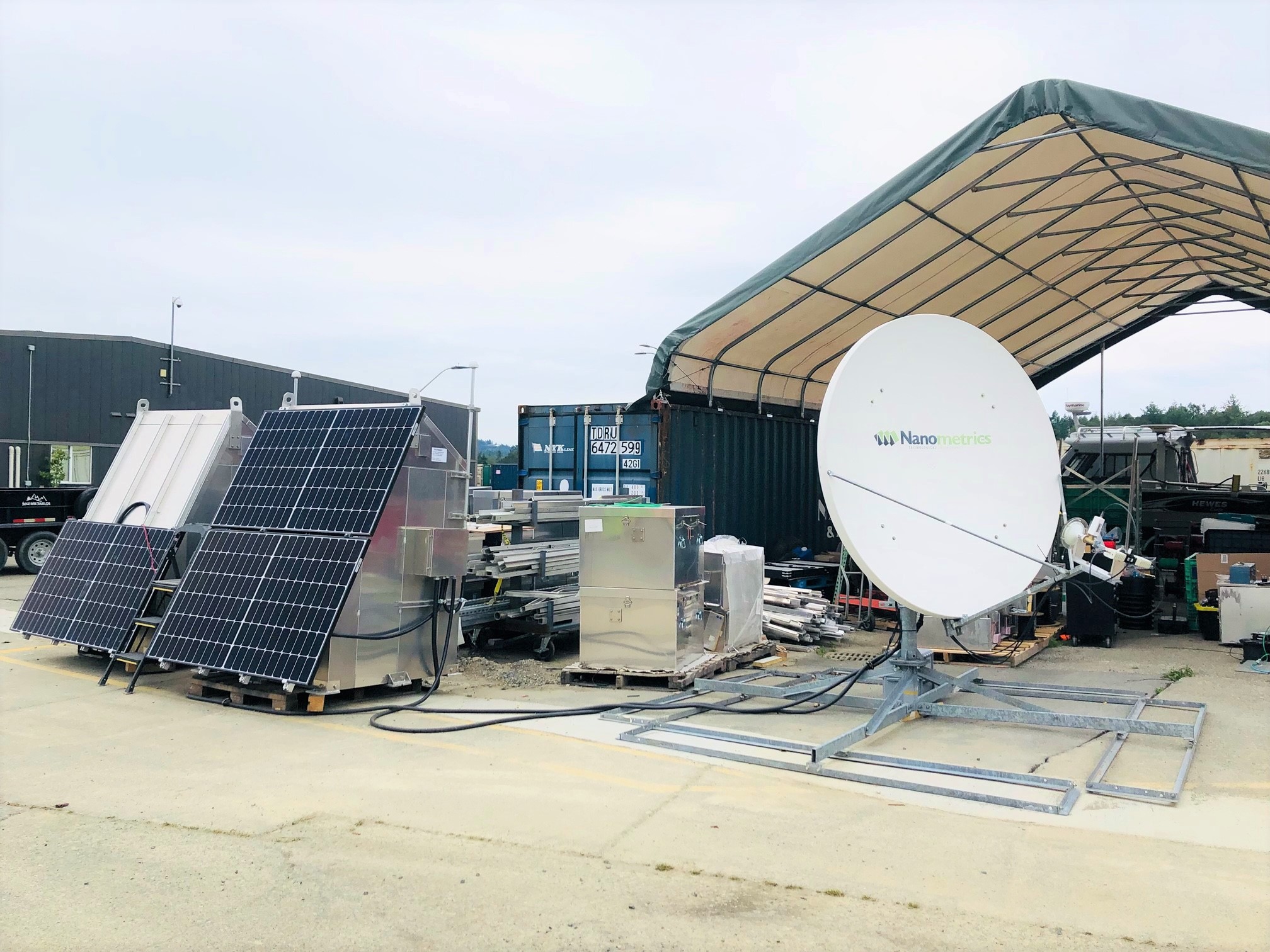
Last week, our field specialists completed testing on equipment that will be installed at remote sites on Haida Gwaii this summer. The huts will help protect the Earthquake Early Warning stations from hurricane-force winds, and are based on a design by colleagues in the United States. Solar panels and batteries will ensure the stations have power, and satellite dishes will send earthquake data to our computer centres. This combination of equipment is ideal for numerous EEW stations which will be installed in remote regions of Canada.
2022-06-08: Student creates "artificial earthquakes" to test the EEW system

As a cooperative student working for the Earthquake Early Warning (EEW) program, Bianca Angheluta helped to develop "artificial earthquakes" in order to test the EEW system. These are computer-generated seismograms to simulate the signals received from natural earthquakes. Large, damaging earthquakes have occurred in Canada in the past, but have been infrequent during recent decades, when modern monitoring equipment was used. The artificial earthquakes are used to supplement the recorded events, to test the EEW system more extensively. This ensures the EEW system will be effective for the various earthquakes that can occur throughout the high-risk areas of Canada - primarily western British Columbia, eastern Ontario, and southern Quebec.
To ensure the method for producing the artificial earthquakes was valid, the same method was used to create seismograms for recorded earthquakes. For example, Bianca generated artificial seismograms for the 2010 magnitude 5.0 Val-des-Bois earthquake, then compared these to the recorded seismograms; the artificial and natural records matched well, meaning this process can be used to test the EEW system.
2022-05-02: Emergency Preparedness Week
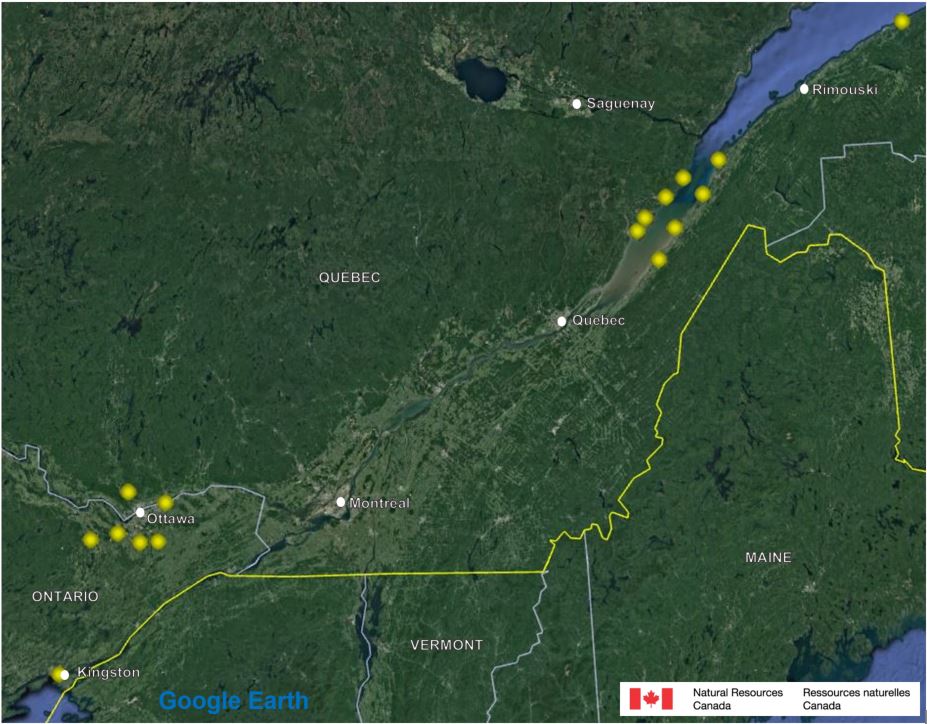
Emergency Preparedness (EP) Week is an ideal opportunity to review your emergency plan, ensure your emergency kit is up-to-date, and discuss with your family and co-workers how to respond to various risks. There are numerous ways to prepare for earthquakes, including holding an earthquake drill at home and at work.
This EP Week, we are proud to mark the installation of the first few Earthquake Early Warning stations in Ontario and Quebec. These will be part of a network which, once established, will have over 400 stations in areas of earthquake risk in Canada. The national EEW system will give seconds to tens-of-seconds of warning before the arrival of strong shaking, allowing people to protect themselves, via Drop, Cover and Hold on.
2022-04-26: Richter Scale Day

Today, seismologists around the world celebrate the birth of Charles Richter, on this day in 1900. Professor Richter was a scientist who is most famous for developing the Richter Scale, the first magnitude scale for describing the size of an earthquake. The scale, denoted by ML, is logarithmic, meaning an ML 6 earthquake is ten times the strength of a ML 5 and 100 times that of an ML 4.
Magnitude is an indication of the size of the earthquake. Intensity describes the strength of shaking and other effects, such as levels of damage. An earthquake has one magnitude, but can have many different intensities. Intensities are usually high close to the earthquake, where the shaking is strong, and become smaller further from the earthquake, where the shaking is weak.
NRCan's Earthquake Early Warning system will alert regions where intensities will be relatively high, indicating earthquake shaking strong enough to cause damage or injury.
2022-03-28: First installation of a national EEW station at BC Ferries' terminal
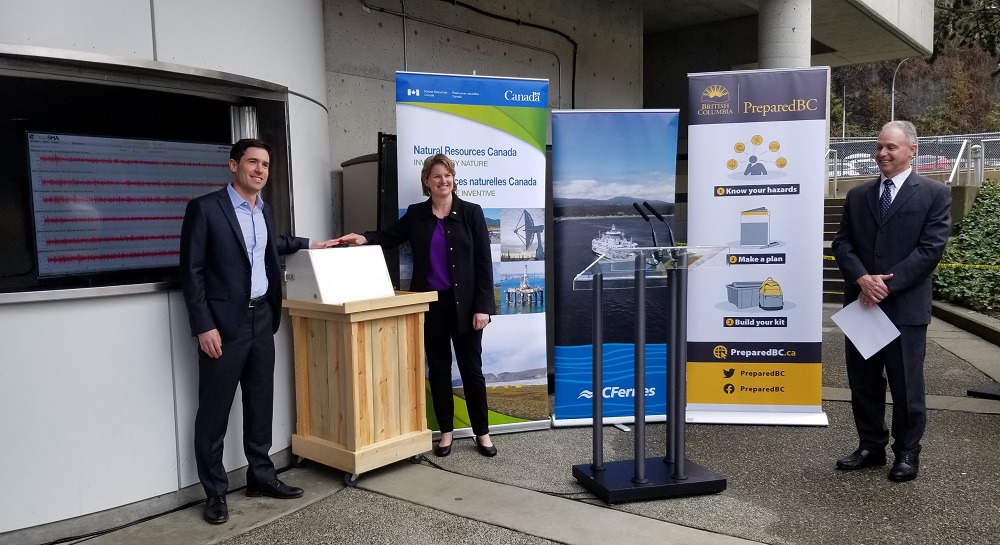
Today, we celebrated the installation of the first Earthquake Early Warning (EEW) station at BC Ferries' Horseshoe Bay terminal. This station and several others at BC Ferries' terminals are ideally located to contribute to the extensive network being established for the national EEW system. The launch of this station was marked by a welcome from BC Ferries' CEO Mark Collins, remarks on earthquake preparedness by BC Provincial Parliamentary Secretary Jennifer Rice, and an introduction to the EEW system by MP Patrick Weiler. The event's finale was the pressing of a red button to turn on the EEW equipment and begin transmission of seismic data. As more of the network stations are installed, we will be testing the EEW system by sending EEW alerts to critical infrastructure (CI) operators, such as BC Ferries. Once the EEW system is fully operational, in 2024, CI operators will receive EEW alerts specific to their needs. The public will automatically receive alerts through the NPAS system.
2022-03-24: Japanese EEW system halts train in Tohoku earthquake
Last week, while riding the Tohoku Shinkansen through Shiroishi, Japan, Yohei Nakagawa and other passengers received an earthquake alert on their smartphones. The train had also received an EEW alert and automatically made an emergency stop. Five seconds later, strong shaking from the earthquake arrived, swaying the train violently. Only a minor derailment occurred, however, and no crew or passengers were injured. It could have been far worse, had the train not stopped. The EEW alert and the protective actions taken likely saved lives, and prevented serious injuries and damage. [image and story courtesy of The Asahi Shimbun]
Once Canada's national EEW system is launched in 2024, we look forward to ways in which EEW alerts might be used to reduce damage, impacts to operations, and injuries, through triggering of automated response technologies. To begin this process, earlier this month NRCan met with representatives from the Transportation and Health sectors in British Columbia, to introduce them to the EEW programme and discuss ways in which EEW alerts could be used to make their operations safer. These sessions will also inform future workshops with the various critical infrastructure sectors in Canada.
